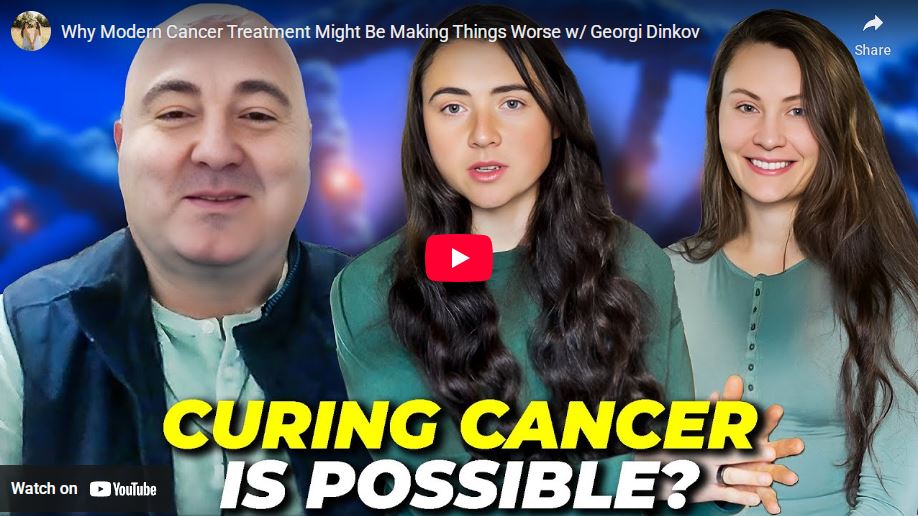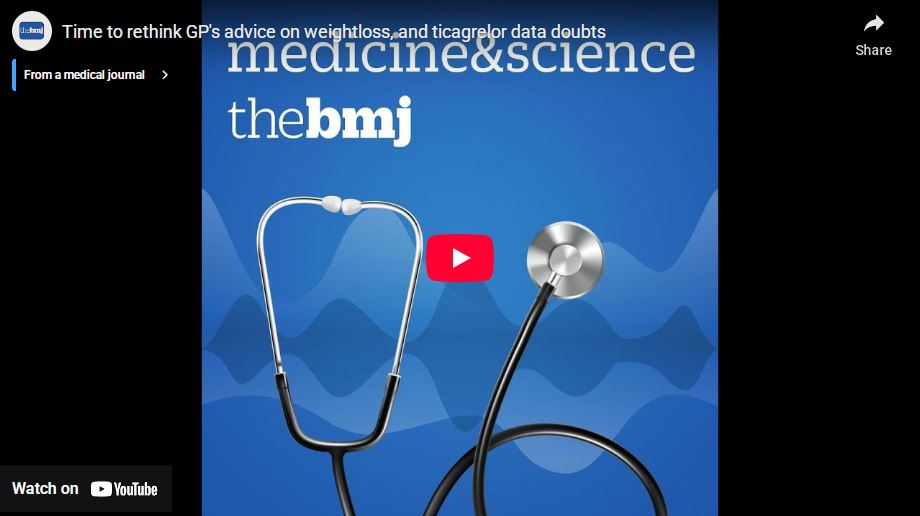
This is a snapshot. To see the full story: https://howtolivethehealthiestlife.com/

Tom's Blog on Life and Livingness

This is a snapshot. To see the full story: https://howtolivethehealthiestlife.com/




Today, I did a little experiment. I sat quietly in the corner while my boys played and kept a tally of how many times they looked at me.
Not for answers. Not for help. Just to see if I was watching.
Twenty-eight times.
Twenty-eight times they looked to see if I saw their cool tricks.
Twenty-eight times they searched my face for approval.
Twenty-eight times they checked to see if I was proud, if I was listening, if I was there.
And I couldn’t help but wonder… what if I had been glued to a screen? What message would I have sent?
That a notification was more important than them?
That the World Wide Web mattered more than their world right in front of me?
Twenty-eight times they would have felt overlooked.
Twenty-eight times they would have questioned their worth.
Twenty-eight times they would have learned that who you are online is what really matters.
But it doesn’t.
In a world obsessed with followers, likes, and filtered versions of reality, our kids need us to show them something different. They need us to show up. To put down the phone. To look them in the eyes and remind them: You matter more than any screen ever will.
Because they’re watching. Always. And the message we send shapes the adults they’ll become.
So tonight, put it down. Be present. Love out loud.
[Brandie Wood]

This artist’s impression shows Cha 1107-7626. Located about 620 light-years away, this rogue planet is about 5-10 times more massive than Jupiter and doesn’t orbit a star. It is eating up material from a disc around it and, using ESO’s Very Large Telescope (VLT), astronomers have discovered that it is now doing so at a rate of six billion tonnes per second – the fastest ever found for any kind of planet. The team suspects that strong magnetic fields could be funneling material towards the planet, something only seen in stars.
A rogue planet is feasting like a star, rewriting the rules of planetary birth.
Finish reading: https://nexusnewsfeed.com/article/science-futures/rogue-planet-spotted-devouring-6-billion-tons-every-second/

by Dr. André Leu D.Sc., BA Com., Grad Dip Ed., International Director, Regeneration International:
Two recent studies reveal that even tiny amounts of chlorpyrifos, a common pesticide that leaves residues on produce, can cause brain damage in unborn and developing children. This exposure occurs from consuming fresh fruits and vegetables that have been treated with this toxic insecticide.
The latest review into Autism has ignored the effects of pesticides in the development of this and related diseases. Exposure to small amounts of pesticides in food can harm the brain’s normal development, leading to a range of serious issues observed in children, including autism spectrum disorder, bipolar disorder, ADHD, and other developmental and behavioral challenges.
Studies conducted independently by researchers at Columbia University’s Center for Children’s Environmental Health, the University of California, Berkeley, and the Mount Sinai School of Medicine found that fetal exposure to small amounts of organophosphate pesticides caused a range of brain abnormalities, leading to children with reduced IQs, diminished attention spans, and increased vulnerability to ADHD.
Finish reading: https://organicconsumers.org/pesticides-in-food-cause-brain-damage-in-children/
A new study published last week dropped a bombshell.
Researchers found that many common medications — not just antibiotics — can quietly rewire your gut microbiome for years after you stop taking them.
We’re talking about things like antidepressants, beta-blockers, proton pump inhibitors (PPIs), and even anxiety meds like benzodiazepines.
These drugs can leave distinct microbial “fingerprints” that linger for years, sometimes altering your gut in ways that mimic the effects of broad-spectrum antibiotics.
Which means if you’ve ever felt like your gut just “won’t bounce back,” even after changing your diet, taking probiotics, or trying different protocols…
…it might be due to a medication you took months or even years ago.
Your gut may still be carrying the legacy of past medications — an “invisible factor” that most gut advice completely overlooks.
from a newsletter by Sara Otto.
~~~~~~~~~~
and Laura Frontiero wrote:
Have you noticed your digestion feels different from how it used to?
Like, a meal you used to handle just fine now leaves you bloated.
Or you get gas out of nowhere.
Or you feel like food just sits there for hours.
Well, it’s probably true.
It’s often due to declining digestive enzymes.
Think of enzymes as the second phase of ‘chewing’ your food.
They’re proteins that break down fat, protein, and carbs into even smaller pieces, so your body can absorb them.
As we get older, our bodies make fewer digestive enzymes.
And when enzymes drop, digestion gets impacted quickly.
You start to experience more:
Bloating after meals
Gas and indigestion
Constipation or loose stools
And while you can’t really “hack” your biology to significantly produce more digestive enzymes as you get older, you can give your body the support it needs – from the outside.
One easy way to do this is eating more enzyme-rich foods like pineapple, papaya, kiwi, or fermented veggies (I have a bigger list here for you).
Supplementation can help too.
With more digestive enzymes in your system, your meals break down more smoothly, nutrients absorb better, and your gut feels calmer and more comfortable after eating.
It’s a simple shift that can make a big difference in how your gut handles meals as the years go by.
I break this whole enzyme situation down (pun intended!) along with more ways to keep your gut young and resilient.
In order to support restoring gut health, I recommend adding enzyme-rich food products in your daily diet. Several vegetables and fruits offer a supply of enzymes. Some of these are:
Papaya
Pineapple
Kiwi
Mango
Honey
Banana
Sauerkraut
Avocado
Miso
Kefir
Kimchi
Ginger
Deficiency of digestive enzymes can lead to severe health consequences, including nutrient deficiency. To help avoid this problem, add foods rich in digestive enzymes and alternate your foods often. All the foods mentioned
above are excellent for providing enzymes. Increase their intake, and you will be less likely to be short of digestive enzymes. These foods are also helpful in improving gut health.
Also consider adding a digestive enzyme capsule to your daily routine.

This newsletter was created out of a desire to help others, and each day I hear from dozens of readers with thoughtful and pressing questions. For a while I tried my best to answer them, but given the volume and how long writing in-depth articles takes—it’s no longer possible.
For this reason, I decided to have monthly open threads where readers can ask whatever they want and tie that into a brief and insightful topic and connect it to a shorter topic many are interested in.
For this month’s open thread, I would like to share some of my thoughts on the practicalities of making people healthier and why so much of this newsletter’s focus has been directed towards publicizing the forgotten “umbrella therapies.”
The Fallacy of Medical Models
Since reality has an almost infinite degree of complexity, any framework we create to define it is doomed to be an oversimplification which excludes critical elements of the picture. However, rather than admit the shortcomings of any given model, that gap in understanding is typically bridged by forcefully asserting the validity of the chosen narrative and selectively focusing on the instances which affirm the validity of the model. Because of this (particularly within politics), you will frequently find a large number of people who are utterly convinced their side is 1000% correct despite another large contingent holding a diametrically opposing view of reality.
Likewise, in medicine, a similar politicization of truth will occur where people will believe their (or their tribe’s) chosen therapy is effective regardless of all evidence to the contrary, and likewise that it is safe regardless of how much evidence exists to the contrary. For example, while going through 54 forgotten news clips, in which, the news media (prior to being bought out by pharmaceutical industry) would routinely report on the dangers of vaccination, I came across this poignant quote from Barbara Loe Fisher:
What’s scientific about that assumption, that every time something bad happens after vaccination it’s a coincidence? That’s not science, that’s politics.
Note: after I originally sent that article out, I unearthed a large number of additional clips not present in the original that were subsequently added in (and you should watch here when you have the time too as they show vaccine injuries are very real and have been with us for decades).
When diagnosing patients, if one’s goal is to get the patient better (rather than just put a diagnostic label on them and the accompanying prescription) a few major challenges emerge:
•First, the same underlying issue can manifest quite differently from patient to patient (e.g., the inflammation and blood clotting created by the COVID vaccines gave rise to dozens of different symptom presentations).
•Second, very similar symptoms can be caused by different agents—particularly those which create systemic inflammation and blood flow obstructions (e.g., Lyme disease and mold toxicity are commonly confused with each other).
•Third, while certain things are more likely to trigger chronic illnesses, less frequent ones can as well (e.g., I’ve seen more cases than I can count where the underlying cause of a patient’s illness was missed by both conventional and integrative practitioners due to a more common cause of that cluster of symptoms being focused on).
•Fourth, the same disease process can interact very differently with different patients (either due to their constitution, co-existing health issues, or what stage of healing they are in), and as a result, the “correct” therapy for a disease may not always be the correct one for them (which amongst other things is why I try to always know multiple ways to treat each ailment I come across).
•Fifth, in many cases, patient’s respond differently to the same therapies due to their constitution (e.g., sensitive patients cannot handle stronger treatments many others do very well with).
Because of this, patients will frequently see numerous providers without having any significant improvement from any of what they’re told to do, and in many cases, they simply have to hope to have the luck to end up in the office of a doctor who’s preferred treatment modality happens to be what their body needs. However, as that is quite an unsatisfactory situation, it will normally be “addressed” by the treating physician adamantly insisting their diagnosis and treatment is correct, and then when treatment failures inevitably emerge, attributing the failure to the patient—in essence no different from the process we observe throughout the political system.
Bridging the Medical Divide
Almost everyone I know in the integrative medical field who has had success treating challenging cases is aware of the previous, and hence does all they can to avoid getting stuck in this trap by prioritizing accurate and personalized diagnoses so the correct treatment can be chosen.
Unfortunately, to some extent, this is diametrically opposed to how medicine is taught, as everyone is conditioned to learn standardized protocols that can be applied to everyone (e.g., colleagues with successful clinics have shared one of the greatest challenges in hiring new integrative doctors is finding people who can go beyond reproducing standard protocols).
Furthermore, personalized approaches to medicine aren’t scalable as the medical system revolves around repeatedly performing the same medical service (e.g., the treatments often cost a lot, so facilities which offer them will try to recoup that investment by giving them to everyone and insurance companies typically will only cover “proven” treatments that apply to larger patient demographics, rather than those which are specifically indicated for a small subset of patients with a condition).
Similarly, while writing this newsletter, I’ve tried to avoid discussing the things I routinely use in practice which I feel are only applicable to 5-10% of patients, as I know if I give an endorsement of the therapy for a specific issue, a large number of people will report back to me it did not work and their money was wasted.
Likewise, many therapies are incredibly dependent on the skill of practitioner, so I try to avoid saying “go see a _____ for this specific issue,” unless it happens to be a health issue I know that modality of healing is highly effective at treating, so even if the specific practitioner is mediocre, a good result is still likely to emerge. For example, I’ve seen Chinese medicine treat a wide range of challenging issues and I know a few talented acupuncturists across the country I will refer patients to, but at the same time, within this newsletter, I’ve had a much smaller number of specific diseases I’ve suggested using acupuncture to treat.
Because of all of this, the ideal solution is to have safe therapies which are fairly likely to help a wide range of conditions (known as “umbrella therapies”—due to everything which falls under them) and for this reason, a significant portion of this newsletter has focused on the forgotten umbrella therapies.
Economic Barriers to Umbrella Remedies
One of the most consistent ways a faulty narrative maintains its dominion over truth is by having a monopoly over the existing discourse so competing ideas which would expose its shortcoming can never be heard. This for instance is why the pharmaceutical industry spent so much money ensuring news stations would no longer air stories critical of vaccination and medical journals will never allow studies comparing the health of vaccinated to unvaccinated children to be published (as anytime they are done, they all show vaccines increase chronic illnesses by roughly 3 to 7 times).
One of the primary ways the medical monopoly is maintained is by forbidding “unapproved” therapies from entering clinical practice (or being covered by insurance). As such, regulators set (highly subjective) standards for approval which essentially make it contingent upon a lot of money being spent to secure the approval rather than solid evidence of efficacy and safety (e.g., best demonstrated by what happened with the COVID vaccines, and to a lesser extent by the suppression of off-patent therapies for COVID-19 while lethal and ineffective drugs like remdesivir were mandated across the country).
Note: in tandem, regulators are routinely offered high paying jobs at pharmaceutical companies once they leave the FDA or CDC, best illustrated by Peter Marks, the man largely responsible for the COVID-19 vaccine disaster, getting a multimillion dollar position six months after leaving the FDA—a corrosive process which both causes the FDA to approve bad therapies and makes it impossible for revolutionary therapies without a lucrative pharmaceutical company behind them to ever have a chance at getting approved.
In short, if there is not an easy way to monetize a therapy and recoup the initial investment to get it approved (e.g., because its off-patent), it is virtually impossible to get an approval—even if mountains of data show it is safer and more effective than the existing therapeutic options for a condition. Rather, that data is often counterproductive, as if a therapy is too effective at treating too many different things (as is the case of umbrella therapies), it immediately intrudes upon the turf of a lot of pharmaceutical companies who have patented drugs for some of those conditions (leading to them doing what they can to protect their interests).
Note: the regulatory system is designed to need specific targeted molecular mechanisms to justify why a therapy works in a specific instance (for which it gets approved), and as such, is inherently antagonistic towards therapies which do too many things.
Finally, within the alternative health field, economic interests still prevail which make it quite challenging for umbrella therapies to succeed. For example, while quite helpful in certain cases, I believe the primary reason so much focus is now on both ivermectin and fenbendazole is because a significant potential markup exists with them, so many (who need advertising money to support their platforms) were willing to spend the time and effort to promote it (and able to do so due to the grass roots support that already existed from the successes of those therapies).
In contrast, most of the umbrella therapies cost almost nothing (e.g., DMSO is 20 dollars a bottle and lasts for months if not longer), so I almost never see them promoted unless someone has come up with a way to make them profitable. For example:
•DMSO alone is “unsafe and ineffective” but many profitable “safe and effective” pharmaceuticals exist which combine DMSO with another drug (thereby creating a patentable product).
•Ultraviolet blood irradiation is “unsafe and ineffective” but once combined with a photosensitizer, becomes a (fairly expensive) “safe and effective” therapy for many of the same things UVBI alone can treat.
For this reason, the umbrella therapies fall into a rather unfortunate niche, where despite having hundreds if not thousands of incredibly compelling studies, almost no one knows they exist (they don’t even show up in most AI searches), and no one wants to promote them.
On my end, when I created this newsletter, I never had any intention of it going anywhere (hence why I chose “a midwestern doctor”), and instead simply did it because I was distraught over what I saw was happening with the COVID vaccines and wanted to try to do something that would make me feel less powerless about the entire situation. In turn, once a fluke of unexpected events made me realize it was going somewhere, I decided to structure the newsletter so that my success was dependent upon if I gave accurate and useful information to readers (as I knew without feeling I was doing that, there was no possible way I would be able to motivate myself to put the time and personal sacrifices into writing this that would be necessary for the endeavor).
In turn, for the reasons mentioned above, I was strongly motivated to focus on the umbrella therapies, particularly those like restoring the physiologic zeta potential, as impaired circulation underlies so many different chronic illnesses. Likewise, in the case of DMSO, I have seen so many people over the years recover from otherwise disabling strokes and spinal cord injuries (which are so sad for everyone involved), that I felt DMSO’s ability to treat central nervous system injuries was something everyone needed to know about.
Note: I’ve now had a lot of readers (compiled here) who had strokes after having read the DMSO stroke article (and procuring DMSO) were able to treat their stroke and avoid a lifetime of disability—which both makes me very happy for them, but also distraught that simple life-changing therapies like that always get stonewalled by the medical industry. Overall, from the thousands of reader reports I’ve received, DMSO seems to help about 85% of those who try it for the myriad of conditions it treats.
Simultaneously however, I also had to grapple with a major challenge—many of the therapies I wanted to write about had thousands, if not tens of thousands of articles written about them, so if I actually wanted to create a real push for them to be able to enter medical practice, doing so would be a truly massive undertaking. Ultimately, I decided I needed to as I was one of the only people positioned to do so and since then, that’s been the primary focus of this publication.
For this reason, more than half of the time I spend on the newsletter goes to that research (along with work behind the scenes to open critical doors for the therapies). This is why, for example, most of the DMSO articles I published here (while compelling and extensively researched) were nonetheless, in my eyes, woefully incomplete so over the last three months I’ve significantly updated some of them (e.g., the the ones on strokes, internal organ disorders, eyes, ears nose and mouth issues, and skin disorders)—and still have a lot more research to go through (which I’m hoping I can finish in about a year).
Likewise, I’ve also been focusing on going through an extensive review of other therapies I feel offer a similar wide spectrum of benefits to DMSO as my principal goal is to create a large swelling of grassroots support for each of them while RFK is H.H.S. Secretary, because having watched this dynamic play out for decades, I feel this is by far the best chance we will ever have to bring these therapies into general medical practice.
In the final part of this article (which exists as an open forum to ask any questions you have), I will cover what some of those other therapies are, along with providing an abridged summary of some of that research I plan to release in the next few years (e.g., the dozens of “incurable” conditions studies found they successfully treated), and discuss a few others I am frequently asked about (e.g., methylene blue and low dose naltrexone)…
https://www.midwesterndoctor.com/p/what-are-umbrella-therapies-and-why